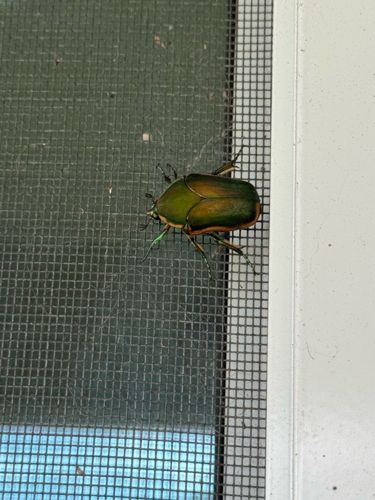Green June Beetle
Scientific Name: Cotinis nitida
Order & Family: Order: Coleoptera, Family: Scarabaeidae
Size: 20-30 mm (0.8-1.2 inches) in length

Natural Habitat
Found in lawns, gardens, agricultural fields, compost piles, and areas with rich organic soil, particularly in the eastern and southern United States.
Diet & Feeding
Adults primarily feed on ripe fruits (such as peaches, figs, grapes, apples, and berries), sap, and sometimes plant foliage. Larvae feed on decaying organic matter in the soil, but can also chew on roots of grasses, vegetables, and ornamentals.
Behavior Patterns
Adult green June beetles are active during the day, especially in warm weather. They are strong fliers and are attracted to decaying organic matter. Larvae live in the soil and feed on decaying matter, but can also damage plant roots. They are often active after heavy rains and are known for crawling on their backs.
Risks & Benefits
Risks: Can be considered a pest in agricultural settings as adults damage ripe fruit and larvae can damage turf and plant roots, especially in nurseries. Benefits: Larvae help in breaking down organic matter, contributing to soil health. Adults are minor pollinators.
Identified on: 8/28/2025